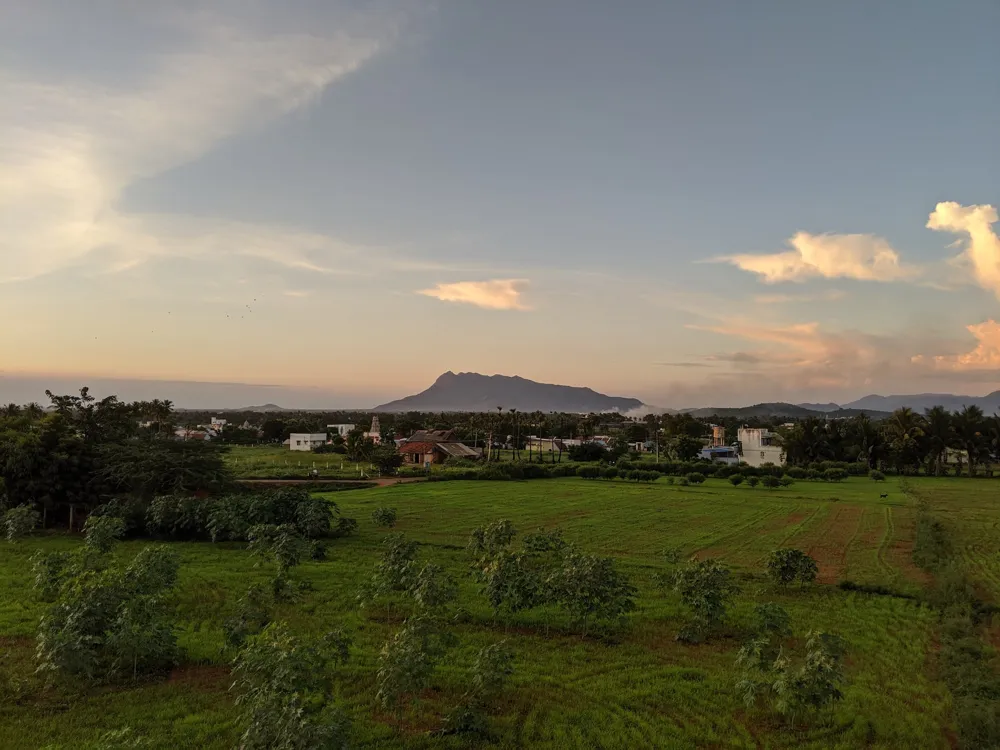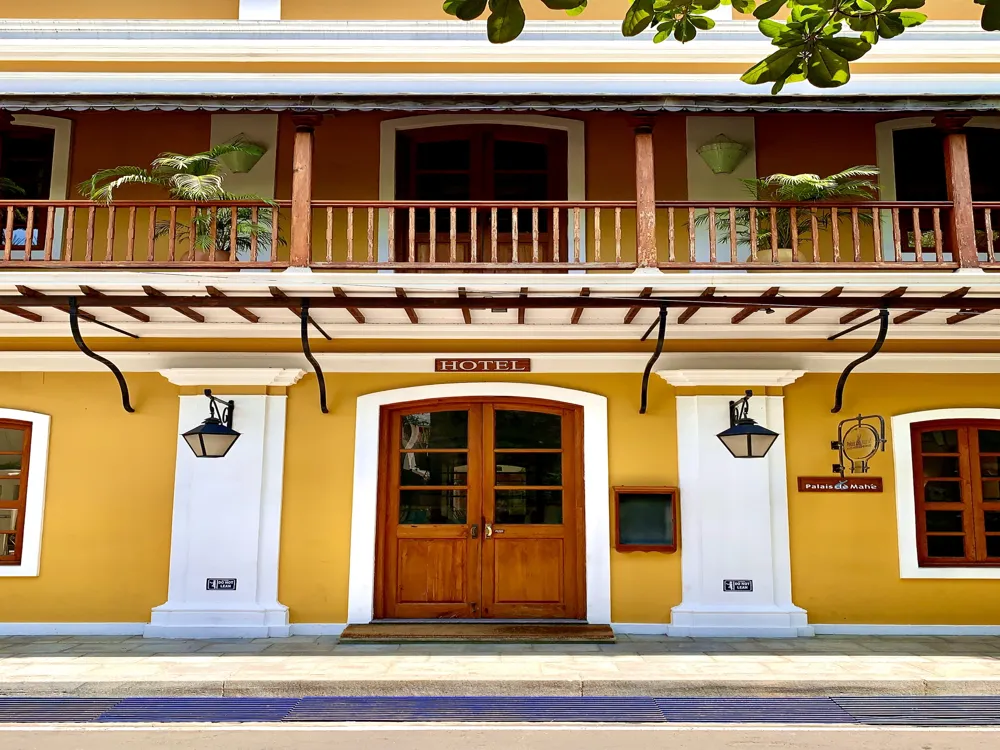Nestled in the heart of Tamil Nadu, the Namakkal Anjaneyar Temple stands as a testament to the rich cultural and spiritual heritage of India. This revered temple, dedicated to Lord Hanuman, is a significant landmark in the town of Namakkal. It is not just a place of worship but a beacon of history and tradition that attracts thousands of devotees and tourists each year. The temple's history is as captivating as its architecture, steeped in centuries-old legends and tales that echo through its walls. The temple's origins trace back to ancient times, rooted in the mythological stories of the Ramayana. According to legend, Lord Hanuman played a critical role in Lord Rama's quest to rescue his wife Sita. This temple is said to be a physical embodiment of Lord Hanuman's enduring devotion and strength. Over the years, it has evolved from a simple shrine to a magnificent edifice, thanks to the contributions of various dynasties and rulers who have left their mark on its architecture and cultural significance. The Namakkal Anjaneyar Temple is not just a spiritual haven but also a center for cultural and educational activities. Regular events, rituals, and festivals celebrated here are a vibrant display of Tamil Nadu's rich traditions and religious practices. These festivals not only offer a spiritual experience but also provide a glimpse into the local customs and the community's way of life. Apart from its religious significance, the temple is an epicenter for social gatherings and communal harmony. People from all walks of life come together here, transcending societal barriers, to seek blessings and partake in the temple's community services. This temple is more than just a place of worship; it's a symbol of unity, faith, and enduring cultural legacy that continues to inspire and attract people from across the world. The Namakkal Anjaneyar Temple is an architectural marvel that embodies the essence of Dravidian architecture, a style prevalent in Southern India. The temple's structure is a harmonious blend of art, spirituality, and ancient engineering, showcasing the ingenuity of the craftsmen of yesteryears. The temple complex is adorned with intricate carvings, majestic pillars, and stunning murals that narrate stories from Hindu mythology, particularly the Ramayana. One of the most striking features of the temple is the towering statue of Lord Hanuman, standing at an impressive height of 18 feet. Carved out of a single rock, this statue is a magnificent example of the sculptural brilliance of ancient Indian artisans. The statue's imposing presence is not just a symbol of Lord Hanuman's strength but also serves as a reminder of the enduring spiritual legacy of the temple. The temple's architecture is characterized by its ornate gopurams (gateway towers), sprawling courtyards, and sanctified sanctums. The main gopuram, towering at the entrance, is an imposing structure that is intricately carved and beautifully painted, serving as a grand welcome to the devotees. The temple's walls are adorned with vivid paintings and carvings that depict scenes from Hindu epics, adding to its aesthetic and spiritual aura. The Namakkal Anjaneyar Temple is not just a religious monument but a living testament to the architectural prowess of ancient India. It stands as a symbol of the rich cultural heritage that has been passed down through generations. The temple's design and construction techniques are a source of study and admiration for historians, architects, and scholars worldwide, making it a significant landmark in the annals of Indian architecture. When visiting the Namakkal Anjaneyar Temple, it's important to adhere to the traditional dress code and conduct. Modest attire is recommended, with shoulders and knees covered. Devotees are expected to maintain a decorum befitting a place of worship, including speaking softly and refraining from any disruptive behavior. The temple is open to visitors at specific times during the day, typically early morning and late afternoon. It's advisable to check the temple timings before planning your visit. Participating in the rituals and poojas can be a deeply spiritual experience, and visitors are encouraged to partake in these traditions. Photography may be restricted in certain areas of the temple. Visitors should look for signage indicating photography restrictions or ask for permission from temple authorities before taking photographs. Understanding and respecting local customs and etiquette is crucial. Engaging with the local community respectfully and showing interest in their traditions can enrich your visit. Avoiding loud conversations and respecting the queue system during darshan (viewing of the deity) is also important. The Namakkal Anjaneyar Temple is well-connected by various modes of transportation, making it easily accessible for visitors. The nearest airport is in Trichy, from where one can hire a taxi or take a bus to Namakkal. The town is also well-connected by road and rail, with frequent bus and train services from major cities in Tamil Nadu and neighboring states. For those driving, Namakkal is connected via major highways, making for a scenic and convenient road trip. Read More:Overview of Namakkal Anjaneyar Temple
Architecture of Namakkal Anjaneyar Temple
Tips When Visiting Namakkal Anjaneyar Temple
Dress Code and Conduct
Timing and Rituals
Photography Guidelines
Local Etiquette
How To Reach Namakkal Anjaneyar Temple
Namakkal Anjaneyar Temple
Namakkal
Tamil Nadu
NaN onwards
View namakkal Packages
Weather :
Tags : Temple
Timings : Opens-6:30 a.m.
Closes-1:00 p.m.
Reopens at 4:30 p.m.
Closes at 9:00 p.m.
Planning a Trip? Ask Your Question
Namakkal Travel Packages
View All Packages For Namakkal
Top Hotel Collections for Namakkal

Private Pool

Luxury Hotels

5-Star Hotels

Pet Friendly
Top Hotels Near Namakkal
Other Top Ranking Places In Namakkal
View All Places To Visit In namakkal
View namakkal Packages
Weather :
Tags : Temple
Timings : Opens-6:30 a.m.
Closes-1:00 p.m.
Reopens at 4:30 p.m.
Closes at 9:00 p.m.
Planning a Trip? Ask Your Question
Namakkal Travel Packages
View All Packages For Namakkal
Top Hotel Collections for Namakkal

Private Pool

Luxury Hotels

5-Star Hotels

Pet Friendly



















